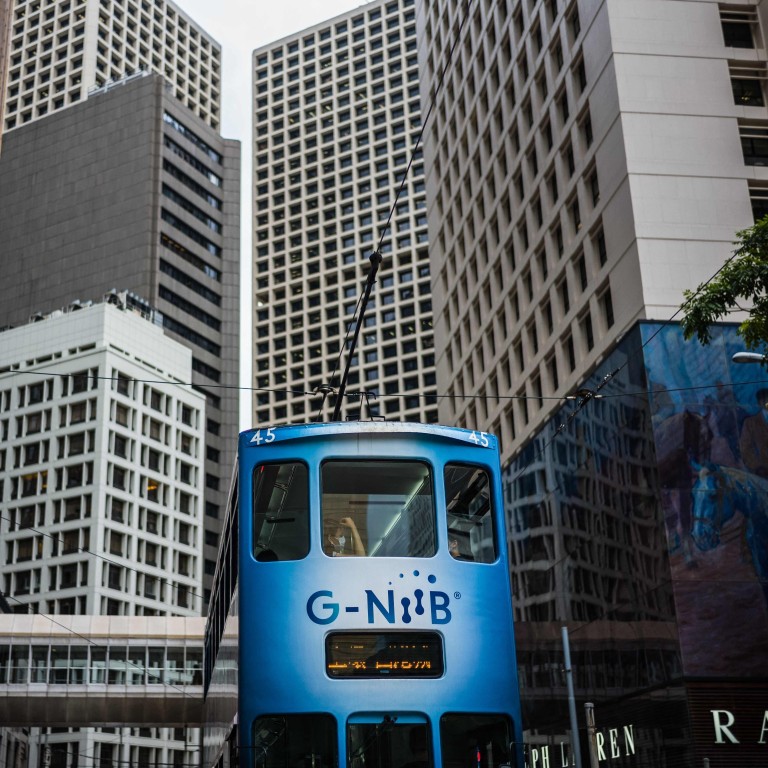
What Hong Kong office landlords must do to retain and attract tenants amid improving outlook
- Landlords and asset owners who maintain better-quality buildings perform better in terms of occupancy and rents, according to Colliers
- With the rent gap between Central and other noncore areas narrowing, tenants are likely to opt for premium space on the same budget
This is a timely call to action for occupiers and landlords, especially as it’s safe to assume that in-depth strategic reviews around their real estate footprints will be ongoing and remain on the agenda in the short to medium term. The evolving needs of businesses and employees will be driving the discussion, with quality of space, sustainability, wellness, flexibility, management, right sizing and cost savings being underpinning factors.
The outlined improvement in performance and evolving needs puts the office sector in a window between rents bottoming out and recovery, especially in relation to the previous peak witnessed in the first quarter of 2019. It presents a clear strategic opportunity for occupiers to add a move to Central, or within the wider CBD.

Given that we expect a rebound in office values and rent from next year, there are several trends that should be acknowledged by both occupiers and landlords, if they want to seize this window of opportunity.
The migration of occupiers from a centralised to a non-core area isn’t a new strategy, but it remains effective if cost saving is the primary goal. Having said that, the rent gap between Central and other areas has currently narrowed, and when coupled with falling rents in the CBD, we see a distinct flight-to-quality opportunity for occupiers.
The chance to seize a more premium space, in a better location using the same budget, is something that a tenant would find hard to refuse. This opportunity is only amplified when you compare it to the average effective unit rent of a solid grade A building of two years ago, and how a tenant can now commit the same cost, or even lower, and secure a space in one of Hong Kong’s most premium buildings.
This is good news for aspirational occupiers and leading landlords in Central, but on the other hand, it will require fringe and noncore landlords to think of initiatives to add value to their buildings to strengthen their occupancy.
Landlords or asset owners looking to invest in their buildings, and those adopting a wait-and-see attitude, Colliers’ research suggests that occupancy and rental performance in prime and better-quality buildings showed greater resilience.
Companies head back to Central amid tumbling office rents
As of July, grade A office vacancy in Central was 8.1 per cent, but the figure drops to 6.4 per cent if 10 office buildings (most of them are strata-titled and over 30 years old) are taken out.
High-quality buildings are important to both landlords and tenants. For landlords, better quality should mean competitiveness against other buildings and portfolios, leading to a more resilient rental performance. This can be achieved in many ways, such as improving infrastructure and tech applications to enable seamless business operations while ensuring hygiene and staff well-being. Some buildings in Central provide contactless services like contactless lifts, e-signatures for visitors and e-booking through apps.
The one thing we can agree on for workplace flexibility is that one size does not fit all. For occupiers and landlords alike, to know the needs of employees, tenants and the surrounding area is the only way to inform your strategy. Only once that has been determined would it be possible to make the right decision on your office space.
For landlords, improving a building’s amenities such as including F&B, a gym and co-working offices to attract quality occupiers should be looked into. Some CBD landlords are already offering flexible workspace in their buildings to attract and retain tenants. Hongkong Land and their Centricity space is one such example.

02:03
US warns American companies about operating in Hong Kong, sanctions 7 Chinese officials
Touching quickly on work-from-home, it’s important to say that Hong Kong’s small apartments, short, effective, and cost-effective commutes are likely to provide the biggest influence on the modern workplace. This all leads to a desire to be in an office, meaning connectivity isn’t the issue, so it very much comes down to what you make of your environment. The question to ask: is it giving the people what they need?
There is no denying the difficulties of the last 24 months. But what has happened is the office market has seen a balancing in the relationship between tenant and landlord. This is healthy and should bring about overall positive changes in terms of standards, and with rents expected to rise next year, now is the opportune time to secure a new space for occupiers.
If quality is a key driver for occupiers, landlords need to make sure they are not being left behind in the market and upgrade their premises. Landlords can also actively look to build relationships with existing and potential tenants in the favoured finance sector and with mainland occupiers.
Nigel Smith is managing director of Colliers in Hong Kong

